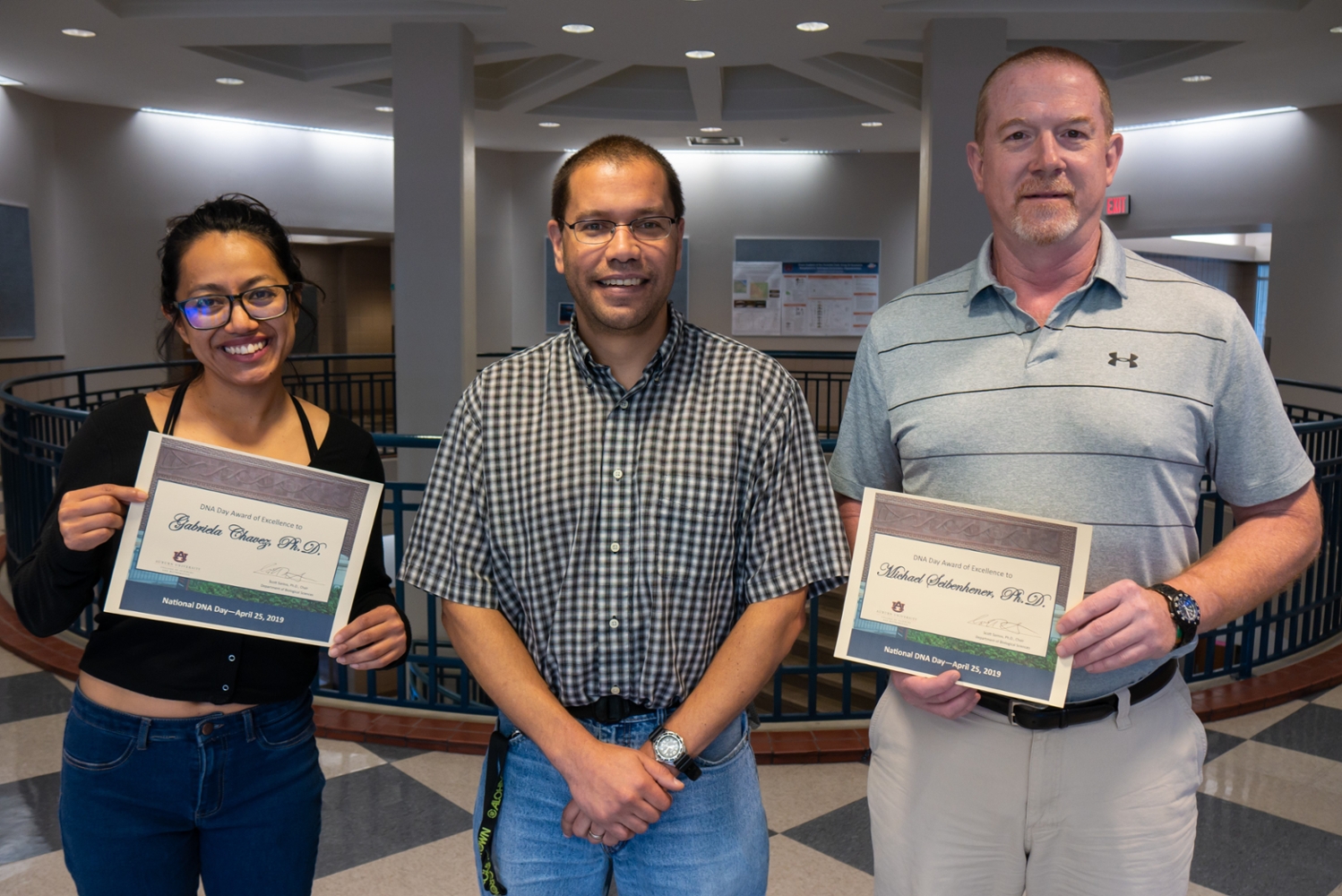Department of Biological Sciences Celebrates DNA Day
Published:
05/28/2019
By:
Maria Gebhardt

Department of Biological Sciences Chair Scott Santos presents Gabriela Chavez and Michael Seibenhener with DNA Day Award of Excellence certificates.
“DNA Day is a great way to highlight science to students and our alumni,” explained Dr. Scott Santos. “Our department shared facts about DNA that increased awareness and importance of our field.”
Researchers from the Department of Biological Sciences submitted facts about DNA that were shared out on social media platforms by the College of Sciences and Mathematics (COSAM).
The post with the most engagement went to Dr. Michael Seibenhener:
Humans and cabbage share about 40-50 percent common DNA.
— Michael Seibenhener, Ph.D., Assistant Research Professor, Department of Biological Sciences
The second most popular post was from Dr. Gabriela Chavez:
DNA provides the strongest proof for evolution, ultimately every living thing can trace its ancestry to a bacterium that lived billions of years ago.
— Gabriela Chavez, Postdoctoral Scientist, Department of Biological Sciences
Additional posts included:
In 2019, for the first time ever, researchers made a new type of synthetic DNA that is built from additional four letters, doubling life's alphabet!
— Joanna Sztuba-Solinska, Ph.D., Assistant Professor, Department of Biological Sciences
All of the DNA in the human body stretched out end-to-end would be about twice the diameter of our Solar System!
— Scott Santos, Ph.D., Chair and Professor, Department of Biological Sciences
Through the process of Parental Imprinting, humans signal the developing embryo to use either the male’s or female’s copy of their DNA for many genes.
— Michael Wooten, Ph.D., Professor, Department of Biological Sciences
The DNA in your mitochondria are critical for life but they may also contribute to your demise.
— Wendy Hood, Ph.D., Associate Professor, Department of Biological Sciences
It is a common misconception that James Watson and Francis Crick discovered DNA; in reality it was first identified in the late 1860s by Swiss chemist Friedrich Miescher.
— Adriana Avila Flores, Ph.D., Assistant Professor, Department of Biological Sciences
Your body has more microbial DNA in or on it than human DNA.
— Scott Santos, Ph.D., Chair and Professor, Department of Biological Sciences
Human cells have an average of about six feet of DNA per cell.
— Christine Sundermann, Ph.D., Professor, Department of Biological Sciences
Variations on the Holliday Junction, critical to recombination, are being used to engineer thousands of new functions for DNA, including nanoswitches, pH sensors, and pH insensitive chloride transporters.
— Anthony Moss, Ph.D., Associate Professor, Department of Biological Sciences
One chromosome includes just one molecule of DNA.
— Richard Paul Sorrentino, Ph.D., Lecturer, Department of Biological Sciences
View all of the posts on Facebook.

